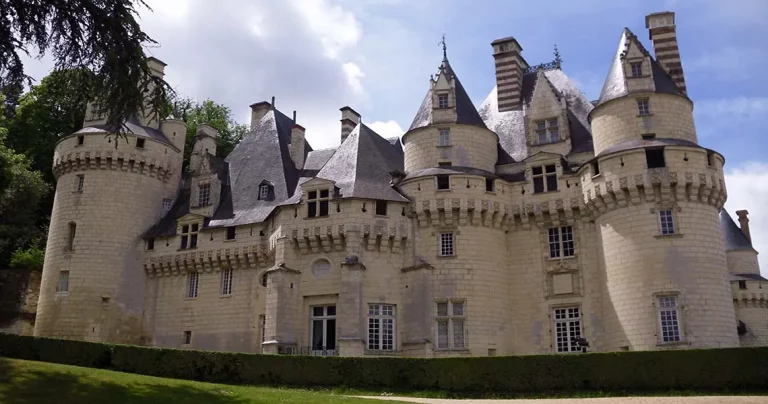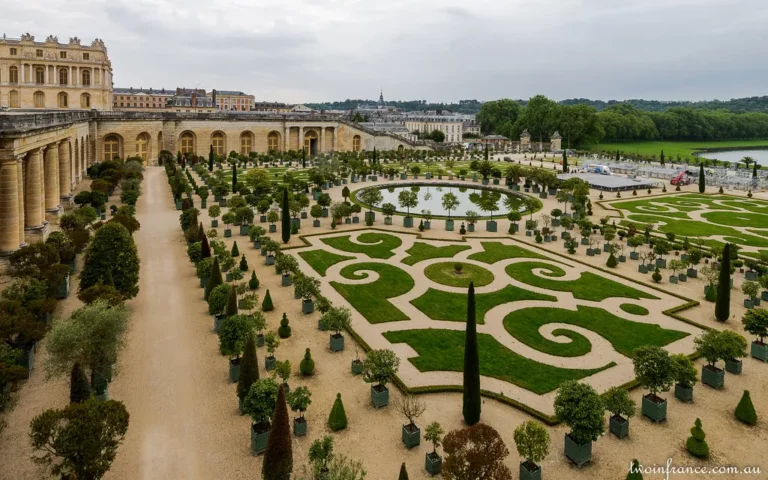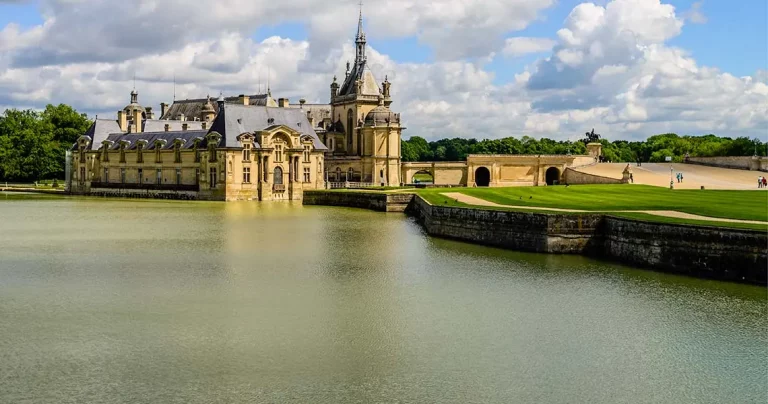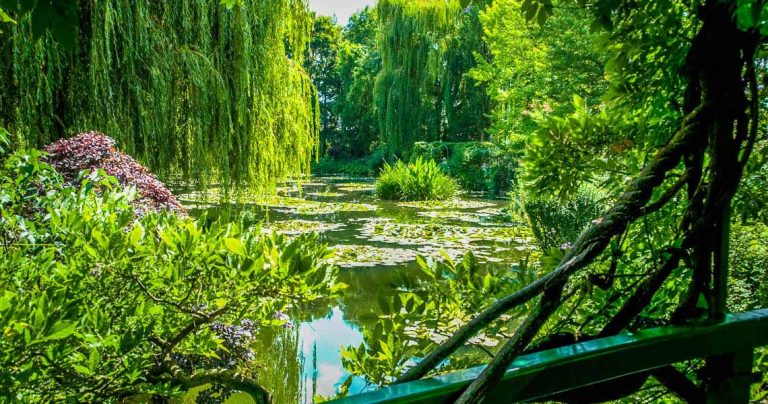Le Clos Lucé and Leonardo da Vinci
The Château du Clos Lucé was home to Leonardo da Vinci for the last three years of his life, and it is here that he died in 1519.
The current owners aim to make the Château du Clos Lucé the top European site for Leonardo da Vinci’s knowledge and his work’s interpretation.
That is no mean feat given that Leonardo was at the Château du Clos Lucé for only three years, and he published none of his works during his lifetime, and virtually all remained unpublished for centuries.
In addition, the Château du Clos Lucé has stiff competition from the Museo Leonardiano Vinci in Leonardo’s hometown of Vinci, Italy and the Museo di Leonardo da Vinci in Florence, Italy.
Nonetheless, the Château du Clos Lucé receives 350,000 visitors annually, including 35% from abroad and ranks 4th as the most visited monument in the Loire Valley.
That speaks wonders for Leonardo’s pulling power and the marketing prowess of the French.
Château du Clos Lucé over the years
Former kitchen hand and favourite of Louis XI, Etienne le Loup, purchased the land in 1471 and built the present-day residence, complete with fortifications.
All that remains today of the fortifications is a watchtower, as does the original pigeon loft built by Etienne le Loup.
Originally known as the Château de Cloux (Latin meaning ‘closed space’), it wasn’t until 1660, long after Leonardo’s death, that the Château took the name of Clos Lucé.
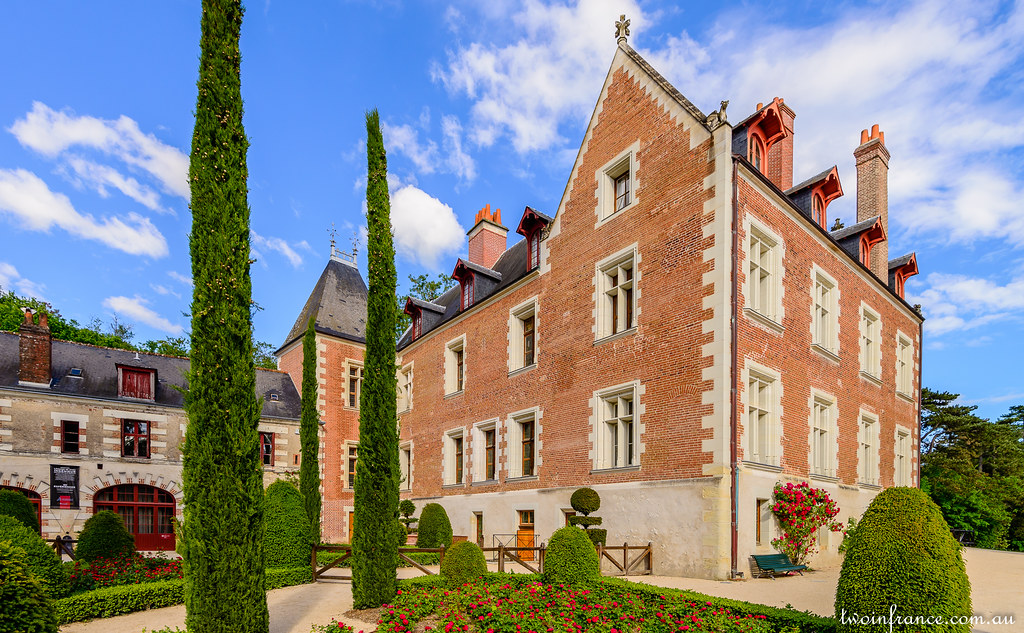
The Château de Cloux was acquired in 1490 by Charles VIII for 3,500 gold crowns and duly became a royal domain. The bill of sale, drawn up on parchment dated July 2nd 1490, is still held here.
The influence of the Italian Renaissance was brought back to the Château de Cloux via a series of wars that occurred in the 16th century between France and Italy.
After Charles VIII’s death, this royal residence was made available to Louise of Savoy, her two young children, future king François I, and his elder sister, Marguerite of Navarre.
François I first met Leonardo da Vinci in Bologna in December 1515, following his victory against the Italians at Marignan.
So impressed was François with Leonardo that he invited him to reside in France at the Château de Cloux.

After the death of Leonardo da Vinci in 1519, the Château de Cloux continued to reside with the Crown.
By the 18th century, the Château was back in the hands of the Amboise family, which managed to save it from the French Revolution.
In 1855, the Saint-Bris family acquired the Domaine du Clos Lucé. One hundred years later, Hubert Saint-Bris and Agnès Saint-Bris decided to open Leonardo da Vinci’s house entirely to the public.
They devoted themselves to restoring this home, with assistance from the artisans of the Monuments Historiques, fashioning stone, wood and stained glass in the same way as their ancestors from the 15th and 16th centuries to give the building the character it had during Leonardo’s time.
Inside Château du Clos Lucé
Access to the Château is a 650-metre walk from the Château d’Amboise up Rue Victor Hugo. Be careful as this is a narrow road (aren’t they all?) with narrow footpaths. Alternatively, a large car park (payable) can be found on Rue du Clos Lucé, about 240 metres from the Château (don’t expect to get any closer).
Don’t be fooled by the outside appearance. The Château du Clos Lucé is more a manor house than a castle, and it is hidden behind a large stone wall with street frontage access. You can’t miss the original watchtower above the entrance.
Red brick with stone detailing, a mode very much in vogue in the 15th century, distinguishes the Château du Clos Lucé.
Climb the Watch Tower, and go along the Gallery to the first floor, where you will see the bedrooms of Leonardo and Marguerite de Navarre.
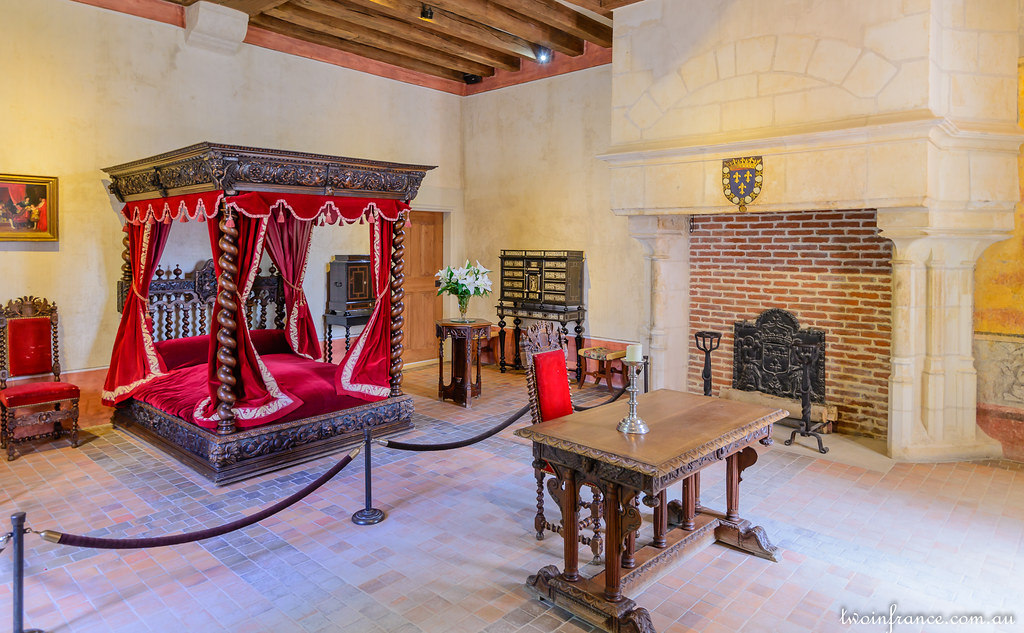
On the ground floor, the Oratory of Anne de Bretagne houses frescos by pupils of Leonardo. Over the doorway is the fresco of The Virgin of the Light, also known as Virgo Lucis, which could give rise to the name Clos Lucé.
The Renaissance Great Hall (home to reproductions of the Mona Lisa and Saint John the Baptist), the 18th-century salons, and the kitchen are also on the same floor.
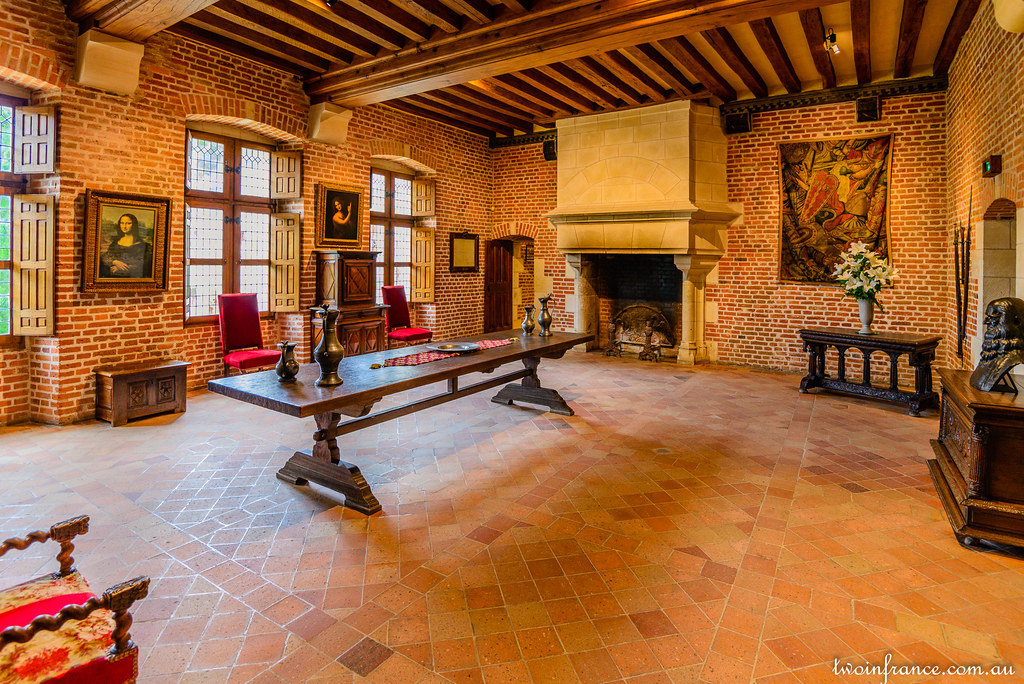
The Model Room, in the basement, is dedicated to forty of Leonardo’s inventions. IBM produced these models from Leonardo’s unique drawings. Many of them were concepts built by others centuries later, such as a flying machine, a machine gun and a car.

The Gardens
The gardens and parkland are a significant part of the visit. They embody several of Leonardo da Vinci’s creations, such as a bridge on two levels, artworks presented in a forested environment, the original pigeon loft, Leonardo’s garden, and a small boating lake.

Leonardo da Vinci, Painter and Architect Galleries
A new exhibition opened in 2021 is dedicated to showcasing da Vinci’s prodigious painting and architectural talents.
Seventeen masterpieces produced by Leonardo da Vinci project onto the walls and ceiling, along with his preparatory drawings in a virtual exhibition visitors can engage with on the ground floor.
The first floor offers an educational and fun tour, enabling visitors to better understand Leonardo da Vinci’s world, his studies on civil, religious and military architecture, and his work as an urban planner and director of spectacular festivities.
We arrived at 5.00 pm and stayed till kicked out at 7.00 pm in May. We could have easily spent another couple of hours. Apart from some unruly teenage students who seemed to enjoy making fun behind their teacher’s back more than absorbing the history unfolding before them, few tourists were evident.
Le Clos Lucé and Leonardo da Vinci
At the invitation of François I and age 64, Leonardo left his homeland for France. He must have known he was not returning because he had taken all his possessions.
He crossed the Alps on a mule, accompanied by his trusted assistant, Francesco Melzi, and Battista de Villanis, his Milanese servant.
Three of his most celebrated paintings were with him: the Mona Lisa (La Gioconda), Saint John the Baptist, and Saint Anne. In addition, he brought all his notebooks, sketches, and manuscripts.
François held Leonardo in great esteem, even calling him mon père. Such was the closeness of the relationship that François built a tunnel between the Château d’Amboise and the Château du Clos Lucé so he might visit more often and without being noticed. The entrance to the tunnel can be viewed in the Model Room of the Château du Clos Lucé.

Leonardo was not likely to feel lonely at the Château du Clos Lucé. Steeped in the Italian way of life, Amboise had become the cradle of the French Renaissance. Italian stonemasons, sculptors, glaziers, carpenters, goldsmiths, and gardeners, were all involved in the re-birth of the Château d’Amboise. In addition, Neapolitan tailors introduced new materials to dress the members of the Royal Court. Italian was the new language and was spoken at the Court.
Leonardo was invariably busy at the Château du Clos Lucé, as illustrated by his numerous drawings and sketches produced in his period at Amboise. He was, among other things, an artist, architect, engineer and philosopher. Among his diverse projects were contributions to the design of the Château d’Amboise, the town plan of Romorantin, the draining of the Sologne marshes, and the double-helix staircase at Chambord.

Between 1517 and 1518, Leonardo da Vinci became the creator and organiser of Court celebrations. He designed complex sets and scenery, extravagant decors, elegant costumes, and special effects involving sound and light. Many of these events were watched from the Gallery of the Château du Clos Lucé, looking out over the courtyard and park.
He also busied himself with unfinished works from his Italian period, such as the painting of Saint John the Baptist. Indeed, much of his prolific output went unfinished. Was he a procrastinator or just a perfectionist? Possibly, he was never quite satisfied with his work, particularly his paintings.
A new technique, reflective light technology, has recently revealed that Leonardo painted three versions on the one canvas of the Lady with an Ermine (1496), previously missed by X-ray. Why did he change his mind? Was he never satisfied? One explanation for Leonardo’s change of mind about this particular painting is that he added the ermine at the request of his patron at the time, the Duke of Milan.

As his life drew to a close, his frailty became evident, particularly a paralysis in his right hand. Nevertheless, he continued to work, but Francesco Melzi, Leonardo’s student, could have finished some of his later output.
Leonardo died on May 2nd, 1519. He left all his manuscripts, instruments and drawings to his student Francesco Melzi. He left half the garden that he owned outside the walls of Milan to his servant, Battista de Villanis and the other half to Salai (Leonardo’s handsome model for John the Baptist).
Even three hundred years later, many believe that Leonardo died in the arms of François I, like the 19th-century artist Jean-Auguste-Dominique Ingres, depicted. A reproduction of this painting hangs next to Leonardo’s bed at Le Clos Lucé. Petit Palais, Paris, holds the original. In all probability, François I was at Saint-Germain-en-Laye, where the Court celebrated the birth of his second son, the future Henri II.

As was his wish, Leonardo was buried inside the Saint-Florentin church in the Chateau d’Amboise.
Saint-Florentin was virtually destroyed during the Revolution and later demolished by Napoleon in 1808. Some bones, possibly Leonardo’s, were found in the 1860s and buried in the Saint-Hubert chapel. The inscription on the chapel wall states that His presumed remains, found during excavations undertaken in 1863, were transferred to this chapel. The use of presumed suggests some doubt.
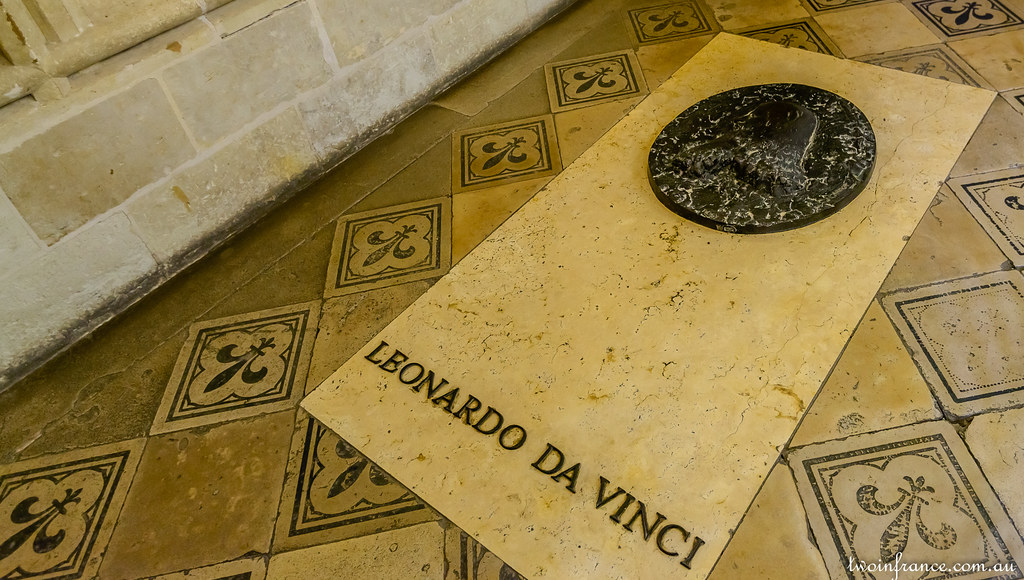
Why were the remains discovered so long after the destruction of the original chapel in 1808, and were they the bones of da Vinci? Don’t you love a good conspiracy theory? Indeed, no one around Amboise wants to dig up the floor to find out if he is there, and I guess we’ll have to wait for another Revolution to find out.
Leonardo is an enigma. He was one of the most accomplished artists of the Renaissance yet completed so few paintings. He was one of the greatest minds of his time, yet he published nothing of his science, philosophy or engineering. Many projects were started but never finished, and much of his greatness was never discovered until centuries later. François I was moved to say:
For each of us, the death of this man is a bereavement, since it is impossible that we will ever see his like again.
François I
The Château du Clos Lucé opens a window, albeit a small window, into the life of this great man and helps us appreciate his visionary mind. You will not waste your visit.
Information
2 rue du Clos Lucé – 37400 Amboise
+33 2 47 57 00 73
[email protected]
Open Daily: 9.00 am to 7.00 pm (seasonal variations)
Train: TGV to Tours and connecting train to Amboise. Car: Motorway A10 and take the Amboise exit
www.vinci-closluce.com


